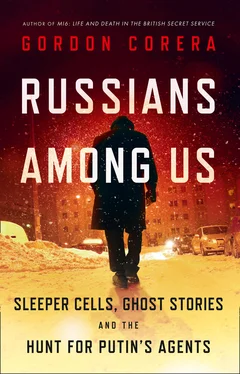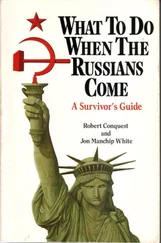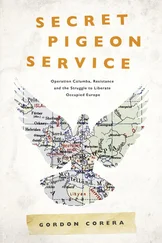1 ...8 9 10 12 13 14 ...23 In Moscow, the Russians were likewise convinced MI6 and the CIA had never stopped their work against them. Many former KGB officers were convinced that the fall of the Soviet Union had been the result of subversion carried out by Western intelligence rather than internal decay. Now, the territory under Moscow’s control had shrunk and its buffer from the West had gone. The Russians thought the strategy was continuing to try to keep Russia down when the truth was almost more painful—the West at the highest policy level had lost interest in Russia. There was no master plan. But in Moscow, the spies could also see their opposite numbers in the CIA and MI6 as busy as ever. John Scarlett’s time in Moscow would end with his expulsion over the recruitment of one agent (although the real reason was a row over who his Russian counterpart would be in London). The CIA and MI6 were opening up intelligence stations in its neighborhood—including former parts of the Soviet Union like the Baltic states—which were then being used to persuade Russians to walk over the border with secrets. Russians—including former KGB officers—were lining up to sell what they knew. There were so many, the CIA was literally turning them away. The knowledge of this pained old KGB hands deeply. It was a humiliation.
In 1994, Vyacheslav Trubnikov took over as head of the SVR. Russia, he told me years later in Moscow, wanted to be an equal partner, working together against common threats like terrorism and proliferation. But instead it took the message that “Russia as the defeated side should stick to the rules and manners, which will be dictated by the victorious allies.” NATO, rather than disbanding, instead expanded closer to Russia’s borders, breaking what Moscow believed was a promise. Too many Western spies were engaged in what Trubnikov (rather endearingly) describes as “hanky panky.” He points to one Western intelligence agency running a sting operation to smuggle nuclear material out of Russia in order to make the point that Moscow could not be trusted to look after it anymore. The belief the other side had not stopped meant you could not, either.
Inside the CIA, the tension over how to view Russia remained intense. One of his subordinates recalls Milt Bearden referring to Russia as “Ouagadougou with rockets,” another remembers it being “Upper Volta with rockets,” but the meaning was the same—a country that was significant only because it happened to have nuclear missiles. Bearden suggested the CIA’s Moscow station would eventually be no different from Paris, staff remember him saying. The agency would gather intelligence on political developments but work jointly with the Russians on issues like terrorism, drugs, and weapons proliferation. That idea sent shudders down the spine of the small band of old hands. Deep inside Russia House, the CIA’s old guard were not willing to let go. They still hungrily sought the tiniest scraps of intelligence. That was because they harbored a dark secret. The hunt for spies had not ended as the Cold War concluded. For all the talk of its adversary being on the back foot, there were a select few within the CIA who knew the Russians had moles burrowed somewhere among them.

IN JUNE 1988, the CIA’s Moscow station chief, Jack Downing, had been traveling on the “Red Arrow”—the Leningrad-Moscow overnight train. In the early hours of the morning, he stepped out of his compartment to strike up a cigarette. At that moment a young Russian walked up to him, shoved an envelope into his hand, and then quickly disappeared down the corridor. This was enticing but also dangerous. The CIA man stuffed the envelope into his coat and quickly returned to his own compartment. He knew there might be cameras, so he waited until he was in a secure room at the consulate in Leningrad before he opened the envelope. Inside was a surveillance picture of himself—the type the KGB took of its targets, along with documents and a note. In the note a Russian claimed he was a KGB officer who worked in the Second Chief Directorate and whose job was to watch American spies. His marriage was on the rocks and he wanted to escape but he was willing to provide intelligence to the CIA before they got him out. It seemed a godsend after dark times for the agency in Russia.
The previous years had been bleak ones. The agency had stared into the abyss back in 1985. The CIA’s Soviet and Eastern Europe division had patiently built up an impressive stable of agents over a number of years. And then they watched their assets go dark one by one in a matter of months. The morning cables brought near-daily news of disasters as KGB officers spying for America literally disappeared, often failing to show up to meet their CIA handlers at an agreed time and then missing the fallback contact. Many, they would later find out, had been executed, their families only informed that their bodies had been buried in unmarked graves.
Deep within Langley, behind a door with five cipher locks, a team had been set up to try to find out why. For some it was personal—agents whose intelligence they had handled were now dead. On a whiteboard they outlined what they knew. Perhaps it was some kind of compromise in the CIA’s Moscow station? Or their communications had been broken? That was more appealing than the alternative—a traitor. In early 1986, Russia House was faced with a dilemma when a new Soviet official volunteered to spy. They took him on and had one goal: keep him alive. They kept the circle of knowledge to as small a group as possible—only a handful of people who kept off regular communications channels and who would travel roundabout routes to meet the agent. This, one veteran says, was the moment of creation of what they describe as a CIA within the CIA—an inner core determined to protect their secrets and battle the KGB. These were people who were paranoid with good reason, a kind of secret society within a secret agency. They knew they faced a formidable adversary. A foe that was determined to divert them from the truth. And this opponent had a name and, for those who met him, a face.
The Russian on the train did not give his name but the CIA code-named him “PROLOGUE.” “He played the role brilliantly,” says one person involved in the case. He would also, perhaps because of the way he came and went over the years, become known as “phantom.” The intelligence he provided included a rundown of the activities of the CIA’s Moscow station and details of the 1985 losses. He provided information that suggested that those disasters had been the result of bad tradecraft, rather than a mole. Some were skeptical about this new source but the “front office” who ran operations wanted to believe he was the real deal. The divisions over whether to believe him became bitter. There would be a show of hands on whether to trust him at one point. The decision was to keep going. There were clues that something was wrong—a piece of intelligence suggesting he was happily married, for instance, which was at odds with the story he told. But over the next three years, he would lead the CIA in a merry dance, delivering documents and diverting and distracting. He knew what the CIA wanted and he knew how to offer it to them in a way they could not resist. In 1990, the time had finally come for him to be exfiltrated. He was given false documents but never showed up for a pickup that would have taken him to a ferry to get out through the Baltics into Finland. The game was up. A cable was sent from Moscow back to headquarters with the bad news. Milt Bearden was in a room with some of the critics of the operation when he read it. “Don’t you say a f-ing thing,” he told them. The CIA had been played.
Читать дальше













